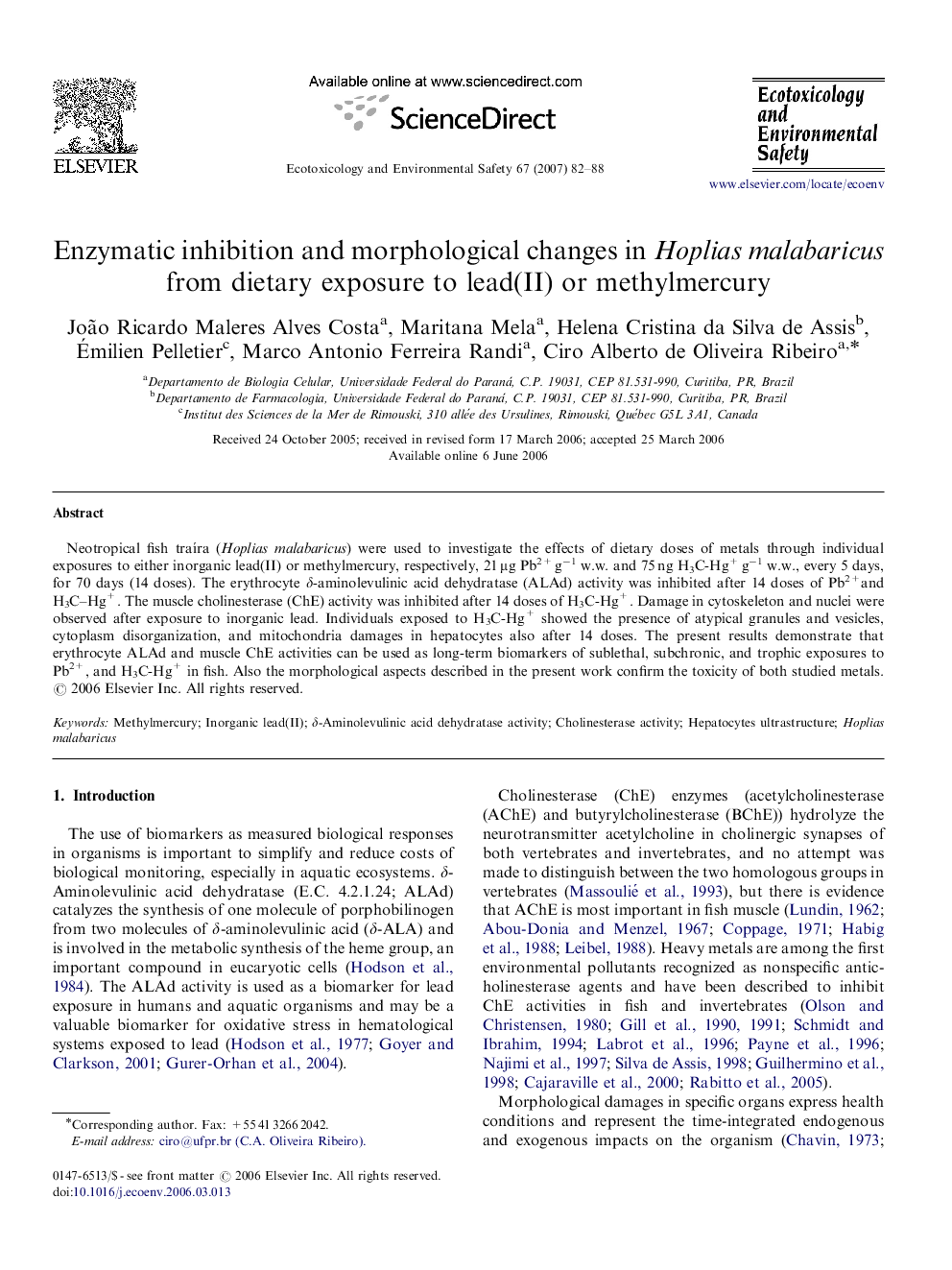| Article ID | Journal | Published Year | Pages | File Type |
|---|---|---|---|---|
| 4422346 | Ecotoxicology and Environmental Safety | 2007 | 7 Pages |
Neotropical fish traíra (Hoplias malabaricus) were used to investigate the effects of dietary doses of metals through individual exposures to either inorganic lead(II) or methylmercury, respectively, 21 μg Pb2+ g−1 w.w. and 75 ng H3C-Hg+ g−1 w.w., every 5 days, for 70 days (14 doses). The erythrocyte δ-aminolevulinic acid dehydratase (ALAd) activity was inhibited after 14 doses of Pb2+and H3C–Hg+. The muscle cholinesterase (ChE) activity was inhibited after 14 doses of H3C-Hg+. Damage in cytoskeleton and nuclei were observed after exposure to inorganic lead. Individuals exposed to H3C-Hg+ showed the presence of atypical granules and vesicles, cytoplasm disorganization, and mitochondria damages in hepatocytes also after 14 doses. The present results demonstrate that erythrocyte ALAd and muscle ChE activities can be used as long-term biomarkers of sublethal, subchronic, and trophic exposures to Pb2+, and H3C-Hg+ in fish. Also the morphological aspects described in the present work confirm the toxicity of both studied metals.
